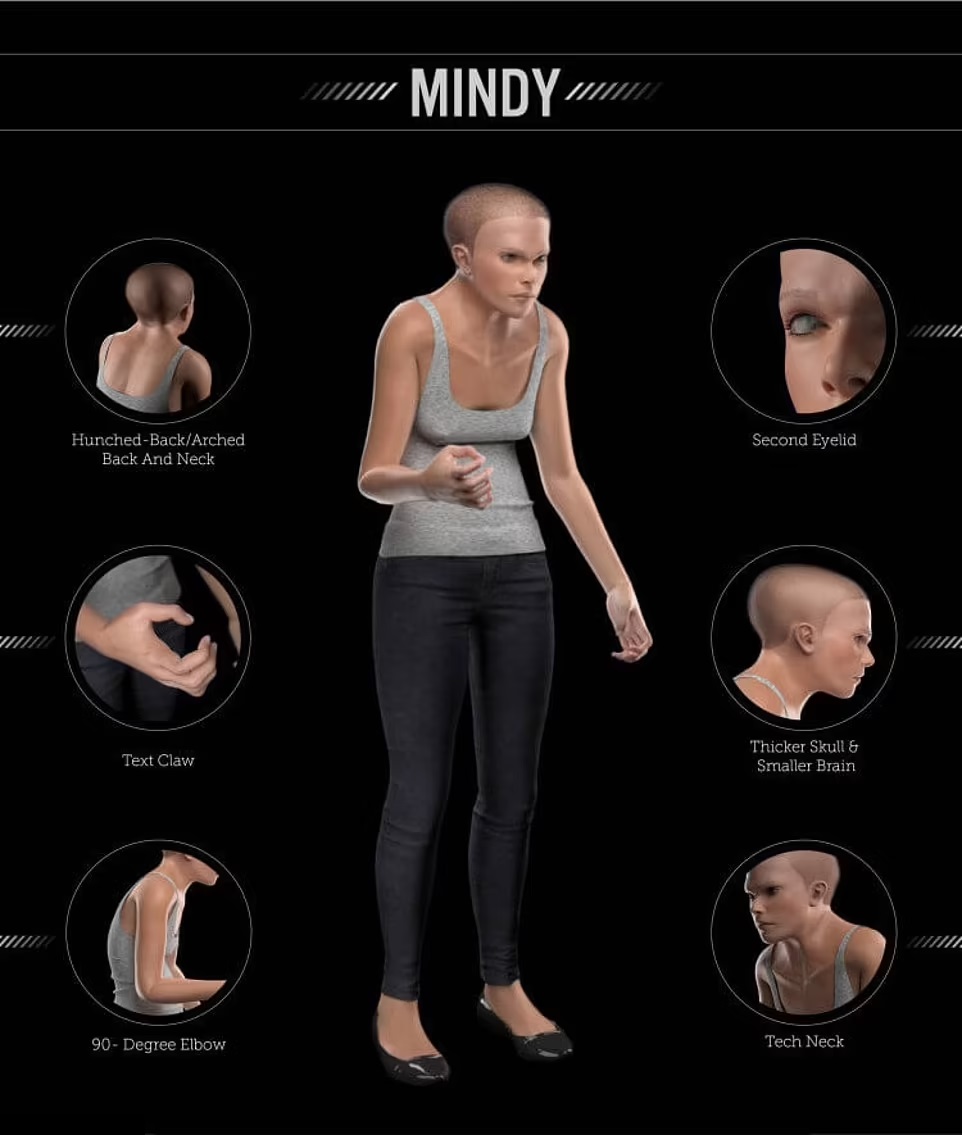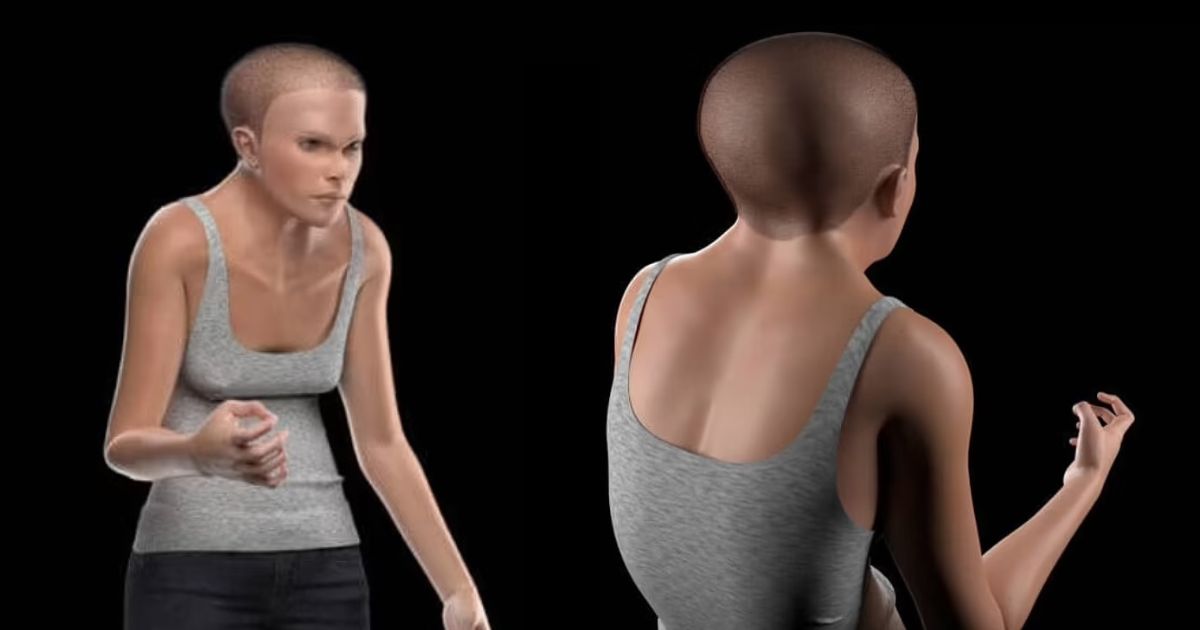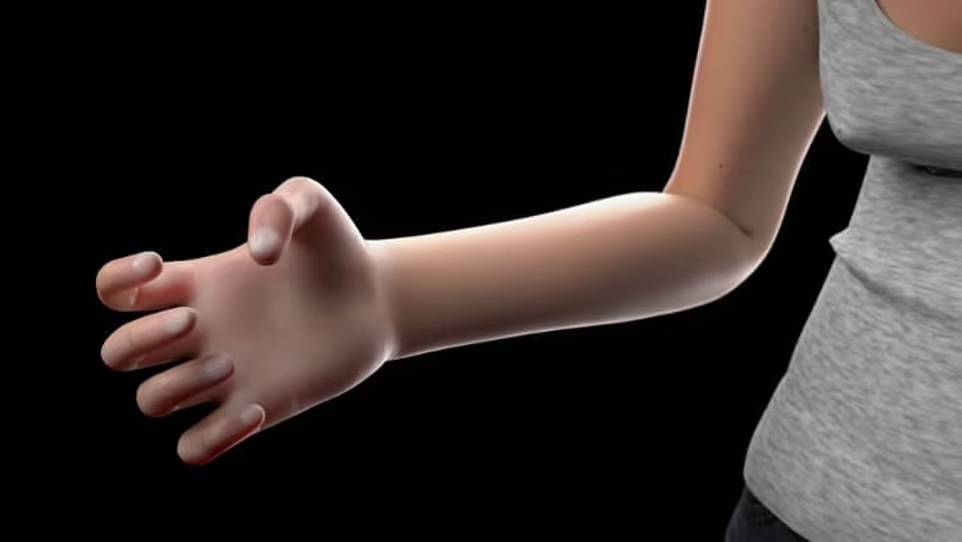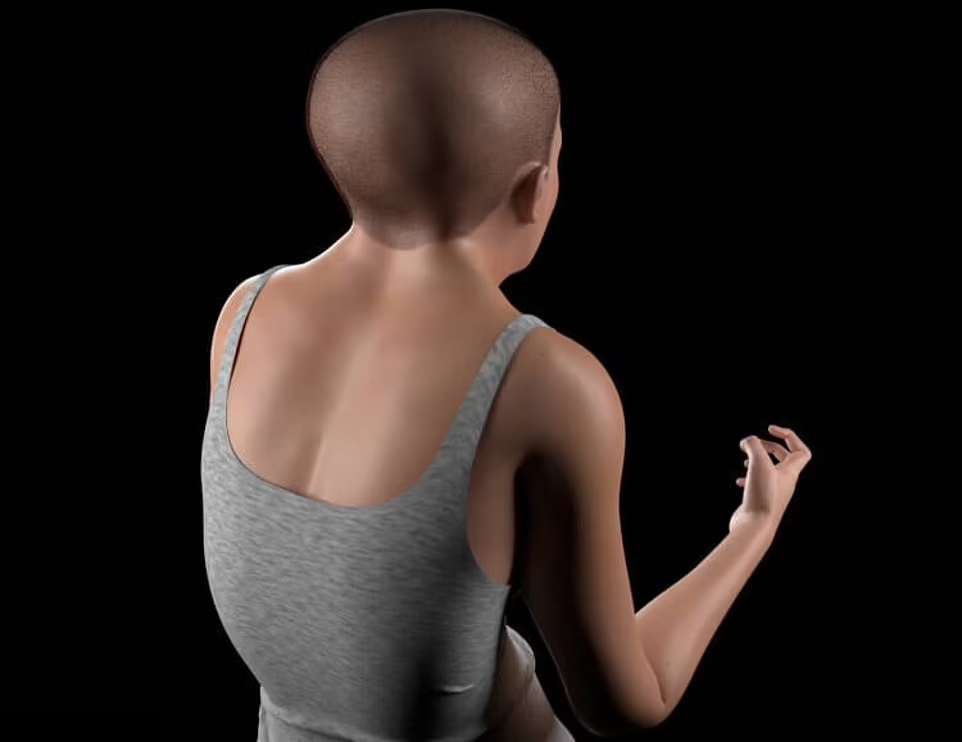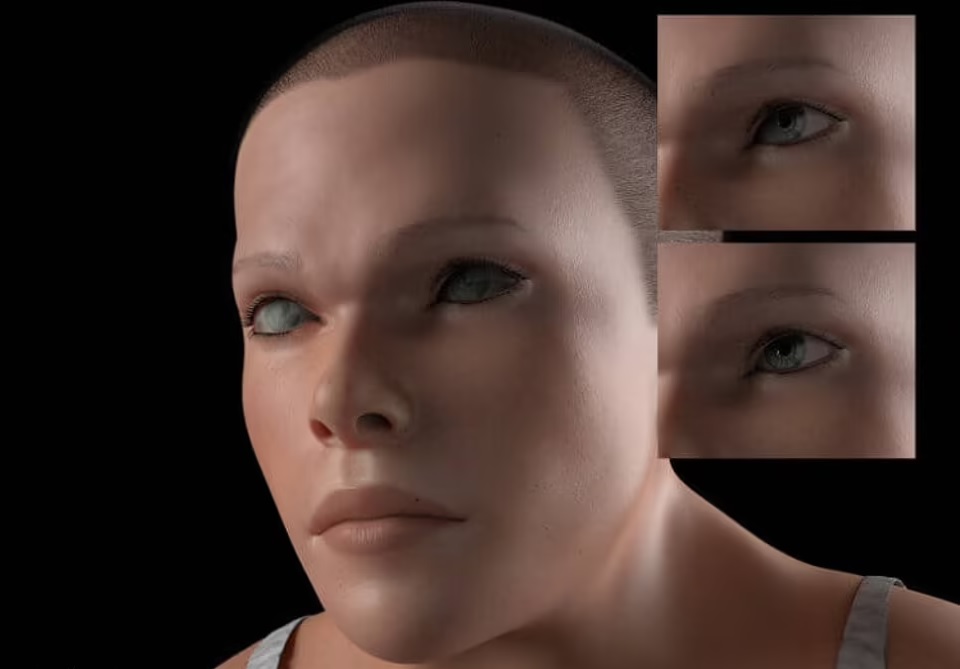A grotesque model has come up with predictions on how humans might look in the year 3000.
As we all know, evolution is constant and exists to help us modify to the ever-changing environment and raise our survivability chances.
While no one knows what humans might look like after centuries or millennia, one group of researchers came up with a worrying model – Mindy – that offers some insight into how our tech-dependent species might look less than a thousand years from now.
Designed by Toll Free Forwarding, Mindy harvested “expert opinion” and “scientific research” to imagine how a human from the year 3,000 might look like and how it would be physically different from modern-day people.
Among other notable features, the model predicted that future humans will have arched backs and necks, thicker skulls, and smaller brains as a result of the overuse of gadgets and reliance on technology.
Humans could also develop a so-called 90-degree elbow, a text claw, and second eyelids to shield their eyes from constant exposure to harmful light.
“We sourced scientific research and expert opinion on the subject, before working with a 3D designer to create a future human whose body has physically changed due to consistent use of smartphones, laptops, and other tech,” the scientists working on the project explained.
Meanwhile, Dr Nikola Djordjevic from Med Alert Help explained how our dependence on technology could affect the way we look in the future.
“The way we hold our phones can cause strain in certain points of contact – causing ‘text claw,’ which is known as cubital tunnel syndrome,” he said.
Dr. K. Daniel Riew of the New York-Presbyterian Orch Spine Hospital added: “When you’re working on a computer or looking down at your phone, the muscles in the back of the neck have to contract to hold your head up.
“The more you look down, the harder the muscles have to work to keep your head up. These muscles can get overly tired and sore from looking down at our smartphones and tablets or spending the majority of our working day on computers.”
Speaking of the potential development of a second eyelid, Kasun Ratnayake of the University of Toledo pitched in saying: “Humans may develop a larger inner eyelid to prevent exposure to excessive light, or the lens of the eye may be evolutionary developed such that it blocks incoming blue light but not other high wavelength lights like green, yellow or red.”
While the new model was met with shock and terror by many, critics suggested the researchers forgot to consider the fact that technology, too, is drastically changing to adapt to our needs and that people living just decades from now might replace phones and laptops with alternatives friendlier to their overall health and development.
What are your thoughts on this matter? Let us know in the comments and don’t forget to SHARE this post with your family and friends. For more news and stories, follow us on Facebook!



